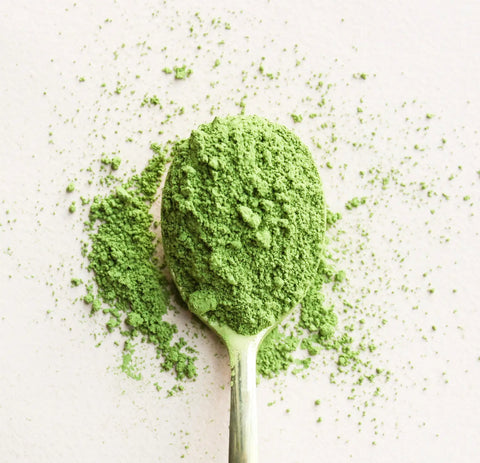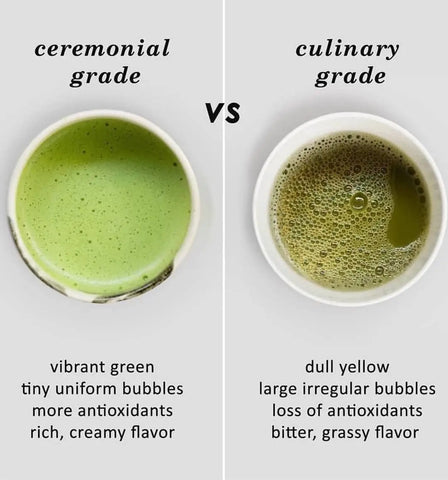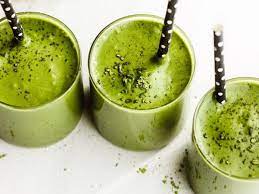The Benefits of Matcha Green Tea
What Does Matcha Taste Like? Overview of Flavors

Matcha is a type of powdered green tea that has become increasingly popular in recent years. Matcha originated from Japan, and it's been consumed there for centuries. Matcha has many benefits, such as increased energy levels, weight loss, improved mental clarity, and more! It also tastes delicious! But how do you know what matcha to buy? There are different grades of matcha: ceremonial grade and culinary grade and different taste as well. Ceremonial grade matcha are much higher quality than the culinary variety because they're grown in a very specific way. They have a bright vegetal taste with notes of sweetness and umami (savory). The best part about this article is that it will be teaching you all about the differences between these two.
You’ve probably heard of matcha - a bright green powdered tea from Japan - but do you know what it tastes like? Matcha has a bright, vegetal, and slightly bitter taste with notes of sweetness and umami. Ceremonial grade matcha is the best quality because it's grown in very specific conditions; it tastes better than most other types of matcha too! You can drink ceremonial grade matcha on its own or add it to lattes.
Vegetal
One of the most prominent tasting notes in high quality matcha is a grassy, vegetal flavor. This taste is often described as being distinctly umami. Because it’s made from whole ground tea leaves, matcha has a fuller, richer taste than most other types of tea.
Bitter
Matcha has a very slightly bitter flavor, which can be either good or bad depending on your preferences. While low quality or improperly prepared matcha can be unpleasantly bitter, high quality matcha is rich and sweet, with undertones of umami. The leaves are greenish-brown in color - they're steamed to stop them from oxidizing and turning yellow. They're also a lot thicker than the ones you find at your local grocery store, bakery or coffee shop.
Umami
Another indicator of high quality matcha is a pronounced umami flavor. Matcha also mixes very easily with other ingredients. Umami is a rich, savory flavor also found in foods like bone broth and miso soup. This umami flavor is also sometimes described as oceanic, similar to seaweed.
Sweet
Matcha has a subtle, lingering sweetness. While pure matcha won’t be as sweet as, say, a matcha latte, it will have a pleasing, subtle sweetness. Not bitter. Interestingly, matcha is not all that bitter - which makes it a lot easier to drink with milk (or sugar) than other teas such as black tea or coffee. Note: the bitterness of matcha increases depending on how much you use in a given recipe.
Smooth
Pungent, slightly grassy notes with hints of sweetness and umami. This is the taste that most people think of when they hear matcha - or if you’ve ever had a cup at your favorite tea house! Matcha has a full-bodied flavor profile due to its high antioxidant levels and unique amino acid composition.
Ceremonial vs. culinary grade matcha

Matcha comes in two main grades or categories: Ceremonial grade matcha or culinary grade matcha. Ceremonial grade matcha, made from the highest quality leaves grown under intense sunlight, is more expensive and meant to be enjoyed as a beverage on its own. Culinary grade matcha can have lower levels of chlorophyll and taste less bitter than ceremonial grades but still has many health benefits like increased energy, better immune function, weight loss support. Both types of matcha are tasty, and there’s no one type of matcha that is necessarily “better” than the other.
How to prepare matcha

Matcha is typically prepared by combining matcha powder with hot water. This creates a frothy, bright green drink that can be sipped like tea or used as an ingredient in other recipes.
Blends of matcha also exist that blend matcha with other ingredients, like almond or coconut milk for a refreshing iced drink. Matcha lattes are delicious and popular, but don't forget about the many different ways to enjoy culinary grade matcha in recipes!
Matcha powder and other ingredients are easy to find in any grocery store. But if it's not available where you live, there is always The Rike Inc.!





Leave a comment